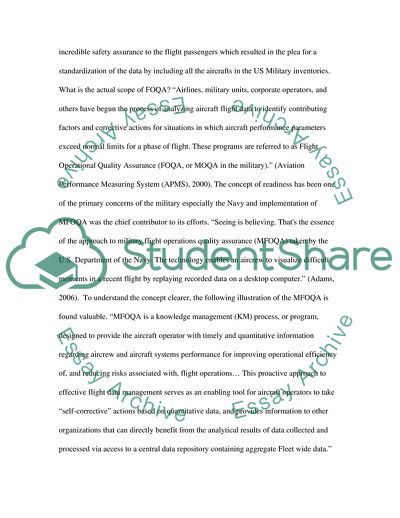Cite this document
(Standardisation Of Flight Operations Quality Assurance (FOQA) In The Essay - 2, n.d.)
Standardisation Of Flight Operations Quality Assurance (FOQA) In The Essay - 2. https://studentshare.org/politics/1710973-should-the-us-military-be-required-to-standardize-the-flight-operations-quality-assurance-foqa-data-on-all-the-aircraft-that-are-in-their-current-inventories
Standardisation Of Flight Operations Quality Assurance (FOQA) In The Essay - 2. https://studentshare.org/politics/1710973-should-the-us-military-be-required-to-standardize-the-flight-operations-quality-assurance-foqa-data-on-all-the-aircraft-that-are-in-their-current-inventories
(Standardisation Of Flight Operations Quality Assurance (FOQA) In The Essay - 2)
Standardisation Of Flight Operations Quality Assurance (FOQA) In The Essay - 2. https://studentshare.org/politics/1710973-should-the-us-military-be-required-to-standardize-the-flight-operations-quality-assurance-foqa-data-on-all-the-aircraft-that-are-in-their-current-inventories.
Standardisation Of Flight Operations Quality Assurance (FOQA) In The Essay - 2. https://studentshare.org/politics/1710973-should-the-us-military-be-required-to-standardize-the-flight-operations-quality-assurance-foqa-data-on-all-the-aircraft-that-are-in-their-current-inventories.
“Standardisation Of Flight Operations Quality Assurance (FOQA) In The Essay - 2”. https://studentshare.org/politics/1710973-should-the-us-military-be-required-to-standardize-the-flight-operations-quality-assurance-foqa-data-on-all-the-aircraft-that-are-in-their-current-inventories.


